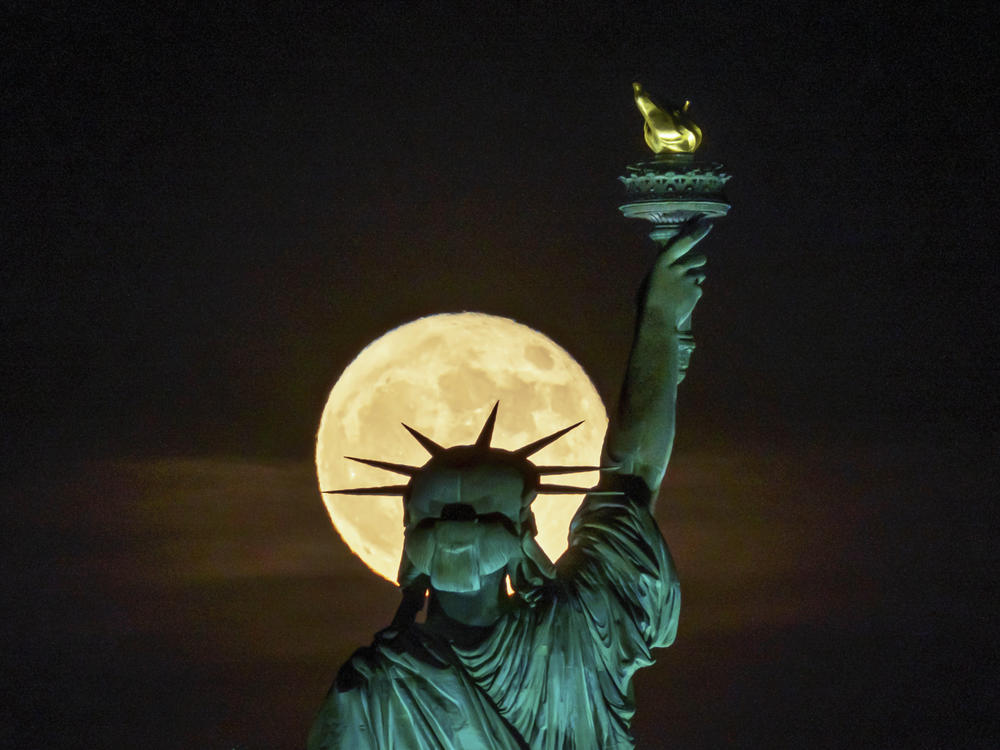Section Branding
Header Content
A buck supermoon is rising on Tuesday. Here's what to look for
Primary Content
The third supermoon of 2022 will grace the night sky on Tuesday.
It's also known as a buck moon because it falls in July. The name doesn't come from its appearance — you won't see the shape of a buck on the moon's surface or anything. Instead, it refers to something that's happening in nature.
"The full Moon in July is called the Buck Moon because the antlers of male deer (bucks) are in full-growth mode at this time," as The Old Farmer's Almanac says. "Bucks shed and regrow their antlers each year, producing a larger and more impressive set as the years go by."
What is a supermoon?
What makes this particular buck moon a supermoon is something else. Supermoons by definition happen "when a full moon coincides with the Moon's closest approach to Earth in its elliptical orbit, a point known as perigee," according to NASA.
"During every 27-day orbit around Earth, the Moon reaches both its perigee, about 226,000 miles (363,300 km) from Earth, and its farthest point, or apogee, about 251,000 miles (405,500 km) from Earth."
Supermoons happen when a full moon comes within at least 90% of the perigee.
What to look for
Supermoons in general appear 17% bigger and 30% brighter than when the moon is at its farthest point away from Earth, according to NASA. Supermoons are slightly bigger and brighter than most full moons, too. Just because it's bigger and brighter doesn't necessarily mean you'll see it unaided, so binoculars may give you a better view.
And if you're looking for some photography tips to capture this event, NASA has you covered with these handy tips.
The best times to view the buck moon will be at moonrise and moonset. You can find your local times for those here.
If it's cloudy where you are on Tuesday, don't fret too much. The moon will appear full for about three days, through early Friday morning, so there are still viewing opportunities.
And this isn't the last supermoon of the year either. The sturgeon moon on the night of Aug. 11 will be the final supermoon in this year's set of four.
Copyright 2022 NPR. To see more, visit https://www.npr.org.

